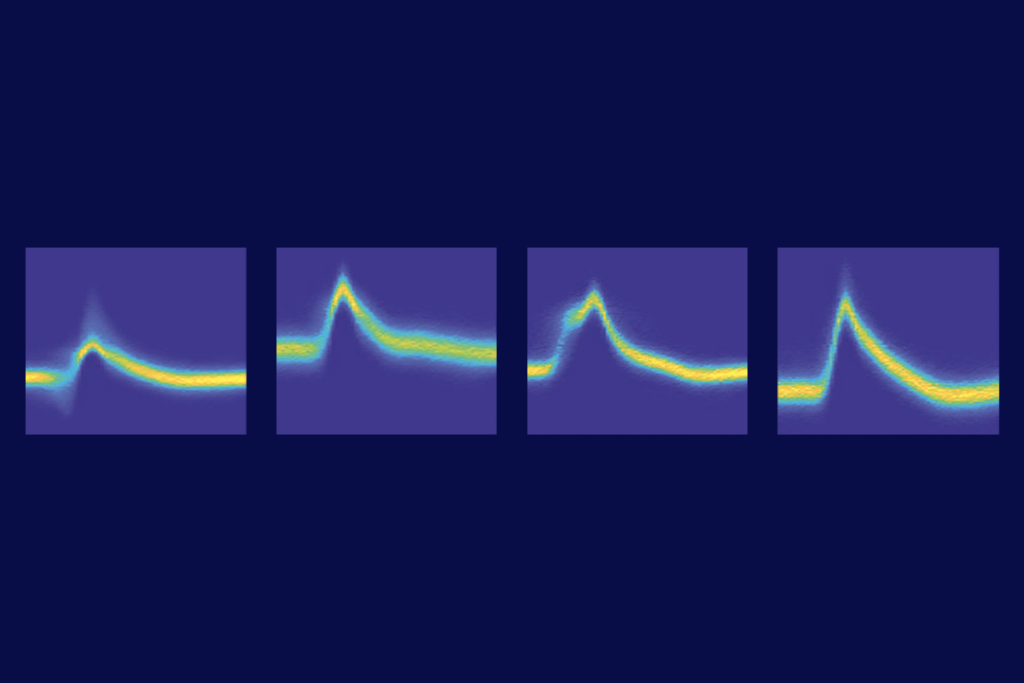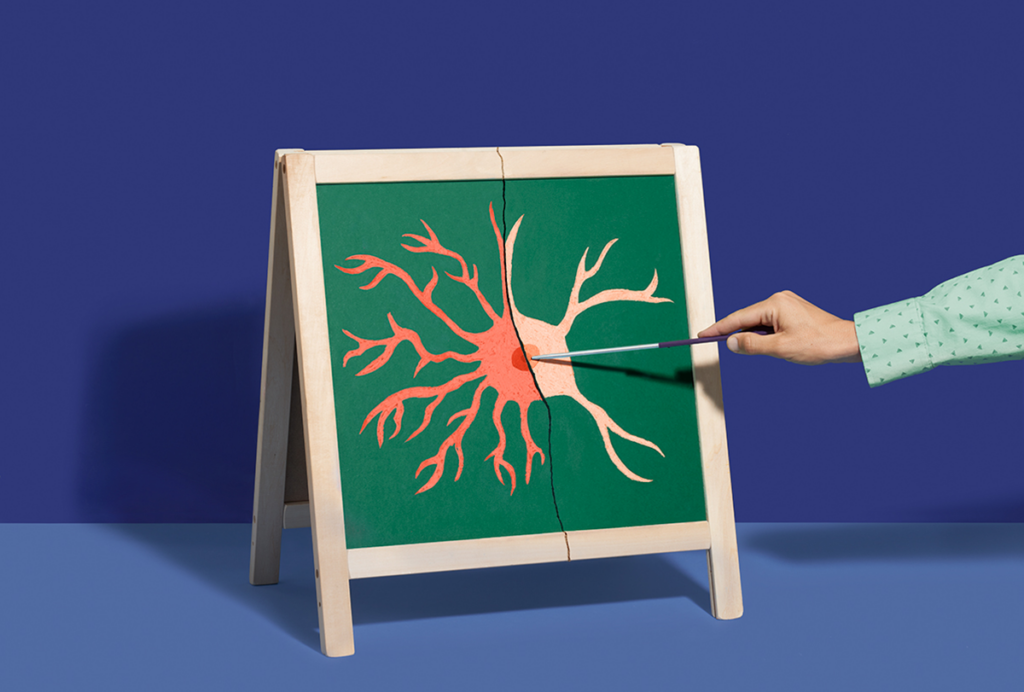Special report: Connectivity
Recent articles
Featured articles
Is ‘underconnectivity’ in autism specific to frontal cortex?
Autism may result from reduced anatomical connectivity and functional connectivity between the frontal cortex and more posterior areas of the brain, say Marcel Adam Just and Timothy Keller.

Is ‘underconnectivity’ in autism specific to frontal cortex?
Autism may result from reduced anatomical connectivity and functional connectivity between the frontal cortex and more posterior areas of the brain, say Marcel Adam Just and Timothy Keller.
Mapping connectivity
A number of imaging tools are available to study connectivity in autism, each providing a slightly different picture of the disorder.

Mapping connectivity
A number of imaging tools are available to study connectivity in autism, each providing a slightly different picture of the disorder.
How do we connect the dots of connectivity?
Growing evidence suggests that abnormal connectivity in the brain underlies autism, but conflicting interpretations persist about where and how the dysfunction occurs. How do we investigate the underlying mechanisms of this theory?

How do we connect the dots of connectivity?
Growing evidence suggests that abnormal connectivity in the brain underlies autism, but conflicting interpretations persist about where and how the dysfunction occurs. How do we investigate the underlying mechanisms of this theory?
Negative results
A number of studies have found no connectivity differences between people with autism and controls, but few have been published so far, says Dan Kennedy.

Negative results
A number of studies have found no connectivity differences between people with autism and controls, but few have been published so far, says Dan Kennedy.
Local connections
To better understand how local connectivity is altered in autism, we first need to define what it means, says Tal Kenet.

Local connections
To better understand how local connectivity is altered in autism, we first need to define what it means, says Tal Kenet.
Connectivity challenges
Researchers should be cautious about interpreting the results of studies that rely on diffusion tensor imaging, says Carlo Pierpaoli.

Connectivity challenges
Researchers should be cautious about interpreting the results of studies that rely on diffusion tensor imaging, says Carlo Pierpaoli.
Fixing motion
New methods to deal with motion artifacts in brain imaging data are critically important, says Mike Tyszka.

Fixing motion
New methods to deal with motion artifacts in brain imaging data are critically important, says Mike Tyszka.
Graph theory
Characterizing the brain’s network organization may help us understand autism, says Damien Fair.

Graph theory
Characterizing the brain’s network organization may help us understand autism, says Damien Fair.
Six questions for connectivity theory research
'Underconnectivity' is considered one of the best-supported theories for the neural basis of autism. But many questions remain unanswered, says Jon Brock.

Six questions for connectivity theory research
'Underconnectivity' is considered one of the best-supported theories for the neural basis of autism. But many questions remain unanswered, says Jon Brock.
Autism brains marked by weak local connections, study says
Connections between neighboring groups of brain cells are weaker in individuals with autism than in controls, according to a report published 14 January in the Proceedings of the National Academy of Sciences.

Autism brains marked by weak local connections, study says
Connections between neighboring groups of brain cells are weaker in individuals with autism than in controls, according to a report published 14 January in the Proceedings of the National Academy of Sciences.
From the archives
Researchers release first data from human connectome project
The first wave of data from the Human Connectome Project, a five-year $30 million effort to map the structure of the human brain, is now freely available, researchers announced at the 2012 Society for Neuroscience annual meeting in New Orleans.

Researchers release first data from human connectome project
The first wave of data from the Human Connectome Project, a five-year $30 million effort to map the structure of the human brain, is now freely available, researchers announced at the 2012 Society for Neuroscience annual meeting in New Orleans.
Autism risk gene found to alter brain wiring
MET, a leading candidate gene for autism risk, influences the strength of connections between brain regions involved in social behaviors, and this effect is especially prominent in people with the disorder. The findings are from a large study using several imaging techniques, published 6 September in Neuron.

Autism risk gene found to alter brain wiring
MET, a leading candidate gene for autism risk, influences the strength of connections between brain regions involved in social behaviors, and this effect is especially prominent in people with the disorder. The findings are from a large study using several imaging techniques, published 6 September in Neuron.
Studies of brain structure boost ‘connectivity theory’ of autism
The brains of people with autism have structural abnormalities that disrupt normal connections between brain regions and impede the flow of information across the brain. That's the conclusion of a 20-year-old theory supported by several new studies.

Studies of brain structure boost ‘connectivity theory’ of autism
The brains of people with autism have structural abnormalities that disrupt normal connections between brain regions and impede the flow of information across the brain. That's the conclusion of a 20-year-old theory supported by several new studies.
Perspective: Brain scans need a rethink
Head movement can bias brain imaging results, undermining a leading theory on the cause of autism, say Ben Deen and Kevin Pelphrey.

Perspective: Brain scans need a rethink
Head movement can bias brain imaging results, undermining a leading theory on the cause of autism, say Ben Deen and Kevin Pelphrey.
Imaging studies question connectivity theory of autism
Three independent studies presented in May at the International Meeting for Autism Research (IMFAR) in Toronto suggest that much of the brain in people with autism looks the same as that of controls. The results contradict the so-called connectivity theory of autism, which holds that the brains of people with the disorder have weak long-range functional connections compared with controls.

Imaging studies question connectivity theory of autism
Three independent studies presented in May at the International Meeting for Autism Research (IMFAR) in Toronto suggest that much of the brain in people with autism looks the same as that of controls. The results contradict the so-called connectivity theory of autism, which holds that the brains of people with the disorder have weak long-range functional connections compared with controls.
Mapping whole-brain networks may untangle autism’s roots
Analyzing the organization of whole-brain structural networks could reveal differences in the way brains of children with autism and other neurodevelopmental disorders are wired.

Mapping whole-brain networks may untangle autism’s roots
Analyzing the organization of whole-brain structural networks could reveal differences in the way brains of children with autism and other neurodevelopmental disorders are wired.
Movement during brain scans may lead to spurious patterns
Head movements taint the results of many brain imaging studies, particularly those analyzing children or individuals with developmental disorders, according to two sobering new studies.

Movement during brain scans may lead to spurious patterns
Head movements taint the results of many brain imaging studies, particularly those analyzing children or individuals with developmental disorders, according to two sobering new studies.
Cognition and behavior: Corpus callosum smaller in autism
Children with autism have a smaller corpus callosum, a bundle of nerve fibers that connects the two hemispheres of the brain, compared with controls, and this difference persists over two years of development, according to a study published 18 February in the Journal of Autism and Developmental Disorders.

Cognition and behavior: Corpus callosum smaller in autism
Children with autism have a smaller corpus callosum, a bundle of nerve fibers that connects the two hemispheres of the brain, compared with controls, and this difference persists over two years of development, according to a study published 18 February in the Journal of Autism and Developmental Disorders.
Explore more from The Transmitter
INSAR takes ‘intentional break’ from annual summer webinar series
The International Society for Autism Research cited a need to “thoughtfully reimagine” its popular online program before resuming it in 2026.

INSAR takes ‘intentional break’ from annual summer webinar series
The International Society for Autism Research cited a need to “thoughtfully reimagine” its popular online program before resuming it in 2026.
Null and Noteworthy: Neurons tracking sequences don’t fire in order
Instead, neurons encode the position of sequential items in working memory based on when they fire during ongoing brain wave oscillations—a finding that challenges a long-standing theory.

Null and Noteworthy: Neurons tracking sequences don’t fire in order
Instead, neurons encode the position of sequential items in working memory based on when they fire during ongoing brain wave oscillations—a finding that challenges a long-standing theory.
How to teach this paper: ‘Neurotoxic reactive astrocytes are induced by activated microglia,’ by Liddelow et al. (2017)
Shane Liddelow and his collaborators identified the factors that transform astrocytes from their helpful to harmful form. Their work is a great choice if you want to teach students about glial cell types, cell culture, gene expression or protein measurement.

How to teach this paper: ‘Neurotoxic reactive astrocytes are induced by activated microglia,’ by Liddelow et al. (2017)
Shane Liddelow and his collaborators identified the factors that transform astrocytes from their helpful to harmful form. Their work is a great choice if you want to teach students about glial cell types, cell culture, gene expression or protein measurement.